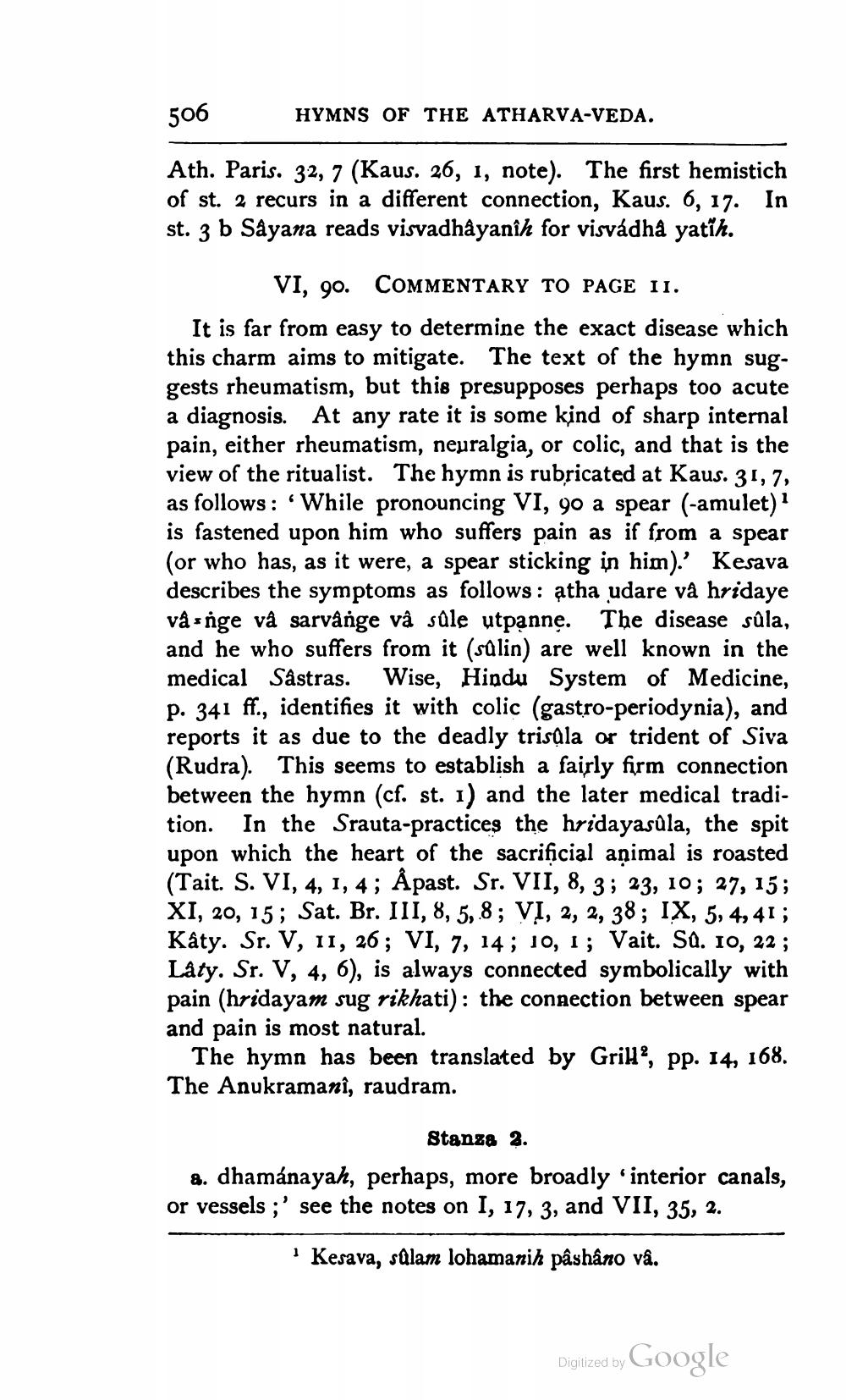________________
506
HYMNS OF THE ATHARVA-VEDA.
Ath. Paris. 32, 7 (Kaus. 26, 1, note). The first hemistich of st. 2 recurs in a different connection, Kaus. 6, 17. In st. 3 b Sayana reads visvadhayanih for visvádha yatih.
VI, 90. COMMENTARY TO PAGE 11. It is far from easy to determine the exact disease which this charm aims to mitigate. The text of the hymn suggests rheumatism, but this presupposes perhaps too acute a diagnosis. At any rate it is some kind of sharp internal pain, either rheumatism, neuralgia, or colic, and that is the view of the ritualist. The hymn is rubricated at Kaus. 31,7, as follows: "While pronouncing VI, 9o a spear (-amulet)' is fastened upon him who suffers pain as if from a spear (or who has, as it were, a spear sticking in him).' Kesava describes the symptoms as follows: ạtha udare và hridaye và ý nge và sarvânge và sale utpanne. The disease sala, and he who suffers from it (sulin) are well known in the medical Sastras. Wise, Hindu System of Medicine, p. 341 ff., identifies it with colic (gastro-periodynia), and reports it as due to the deadly trisala or trident of Siva (Rudra). This seems to establish a fairly firm connection between the hymn (cf. st. 1) and the later medical tradition. In the Srauta-practices the hridayasûla, the spit upon which the heart of the sacrificial animal is roasted (Tait. S. VI, 4, 1, 4; Åpast. Sr. VII, 8, 3 ; 23, 10; 27, 15; XI, 25, 15; Sat. Br. III, 8, 5, 8; VỊ, 2, 2, 38; IX, 5, 4, 4s; Kâty. Sr. V, 11, 26; VI, 7, 14; 10, 1; Vait. SQ. 10, 22; Laty. Sr. V, 4, 6), is always connected symbolically with pain (hridayam sug rikhati): the connection between spear and pain is most natural.
The hymn has been translated by Grill?, pp. 14, 168. The Anukramani, raudram.
Stanza 2. 8. dhamánayah, perhaps, more broadly 'interior canals, or vessels ;' see the notes on I, 17, 3, and VII, 35, 2.
Kesava, salam lohamanih pâshano vå.
Digitized by Google




